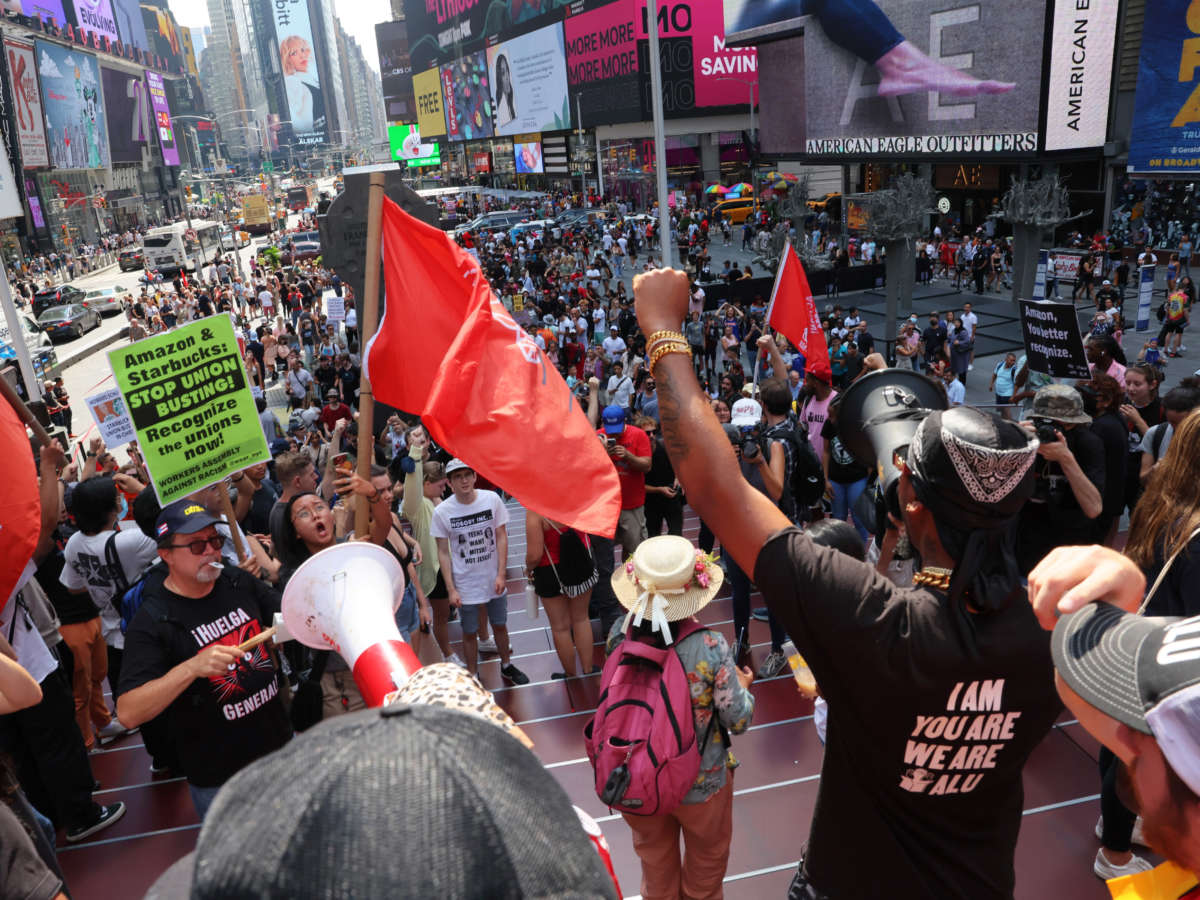

The National Labor Relations Board (NLRB), has released new data that shows union filings have increased dramatically in the past year. They reached a six-year high, and increased by more than 50% over the previous year.
Fiscal Year 2022, which ran from October 2021 to September 2022, saw a rise in union petition filings with NLRB. by 53 percentOver Fiscal Year 2021. In total, workers filed 2,510 union petitions in the most recent fiscal year — the highest number of filings since Fiscal Year 2016.
The data is a show of the strong growth of the labor movement in just the past year, which has seen both the success of groundbreaking union campaigns from Starbucks and Amazon workers and also the spread of such campaigns to workers for other household name companies like Trader Joe’s, Apple and, most recently, Home Depot. Labor advocates argue that workers have been empowered more in recent years. Inequality in wealth growthAnd runaway capitalismThis has resulted in a decline in pay and worse working conditions.
According to the NLRB’s most recent fiscal year, there were also more unfair labor practice filings. These are accusations of illegal labor behavior. These charges rose 19 percent in Fiscal Year 2022 with almost 18,000 charges.
Parties on either side of a labor dispute — employers or workers — can file unfair labor practice charges, but the increase could perhaps indicate an increase in workers’ willingness to stand up to illegal labor practices or union busting. In many cases, like that of Starbucks Workers United’s campaign, the vast majority of the unfair labor practice filings come from the union rather than the employer.
In all, the NLRB noted that total case intake, including union petitions and unfair labor practice filings, increased by 23 percent in Fiscal Year 2022 — the largest single-year percentage increase since Fiscal Year 1959.
Although the efficiency of staff at the NLRB has improved, the labor board said that the increase in filings is yet another sign that the agency is in dire financial need of funding.
For nine years, NLRB has had the same budget of 274 million. Inflation means that the agency has seen a 25% budget reduction since Fiscal Year 2014. This has resulted in a loss of 39% of agency staff and 50% of its field offices staff.
“Our field staff has done a tremendous job handling a historic surge in union election petitions and unfair labor practice charges, but this situation is unsustainable,” NLRB General Counsel Jennifer Abruzzo said in a statement. “We need Congress to provide increased funding so we can hire the staff we need and provide necessary resources to conduct hearings and elections, investigate charges, settle and litigate meritorious cases, and obtain full and prompt remedies for workers whose rights are violated.”
This sudden increase in cases is due to a period of severe funding and staffing shortfalls at the Agency.
Adjusting for inflation, the NLRB’s budget has decreased 25% since 2014. pic.twitter.com/d7B0oM02Qh
— NLRB (@NLRB) October 6, 2022
In his budget request for 2023 President Joe Biden asked for A 16 percent increase in the agency’s budget. The House included this boost in their 2023 appropriations budget draft — but although agency and labor advocates have lauded the increase, they say it is still not enough to Take care of the current caseloadRespond to the resurgence in the labor movement.
Democrats had urged Congress to instead boost the agency’s budget to $368 million, which they say would better meet the agency’s needs. Congress has yet to cometo an agreement regarding full-year appropriations in Fiscal Year 2023.
“[W]ith 60 million non-union workers saying they would join a union if given the chance (including nearly 75 percent of young workers age 18-24), we only expect union election petitions to further increase,” Democrats WriteApril in a letter. “With this skyrocketing workload, the NLRB is now responsible for far more workers than a decade ago yet has been denied the funding to meet these statutory requirements.”
Other reports have also reported the increase of the union movement over the last year. According to data from Cornell University’s Labor Action Tracker, the amount of labor strikes held by workers between January and September of this year has already outnumbered the amount of strikes in all of 2021. With an active “Striketober” in store, the number of strikes held this year is on track to far surpass last year’s strike activity.
